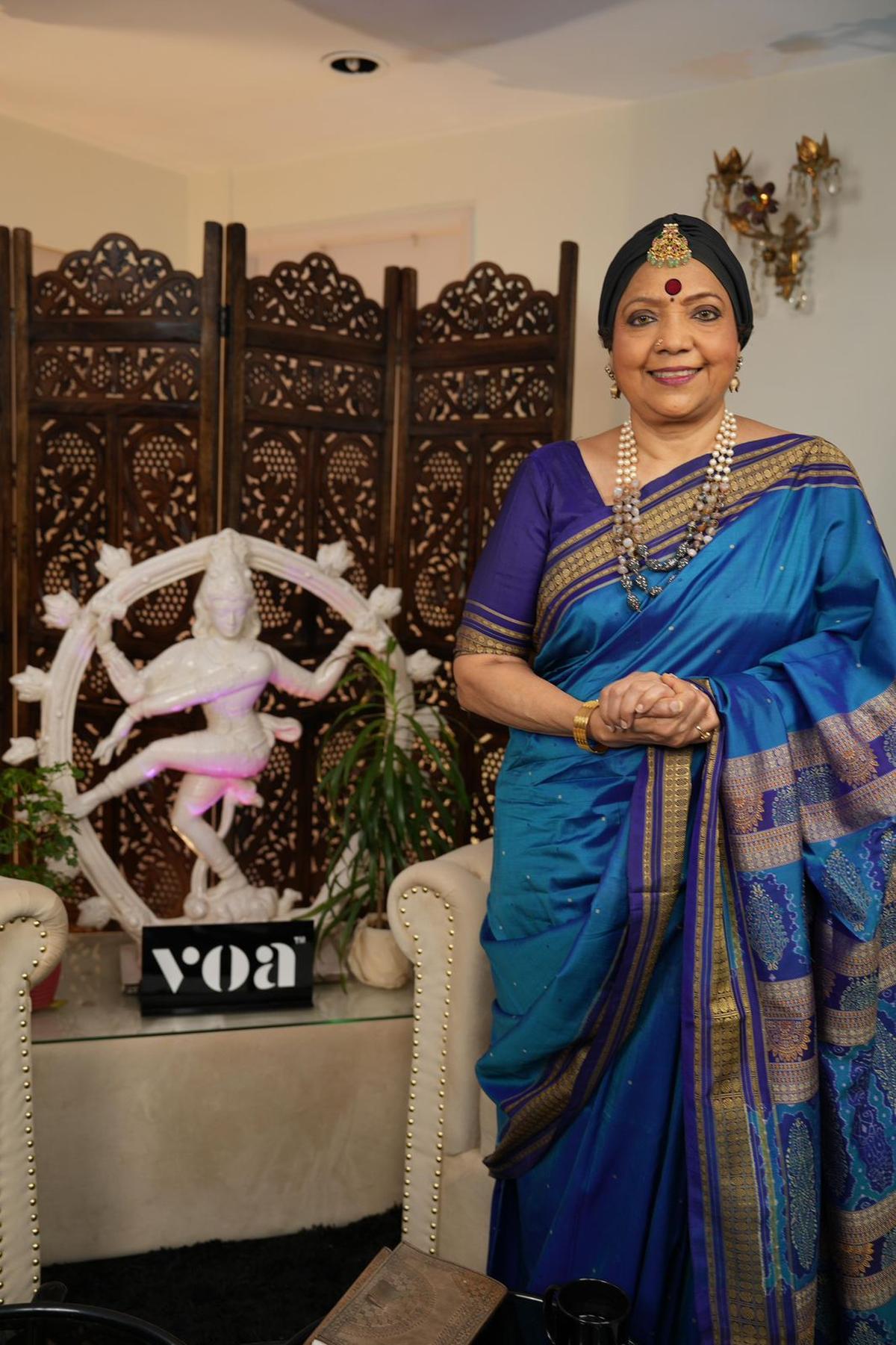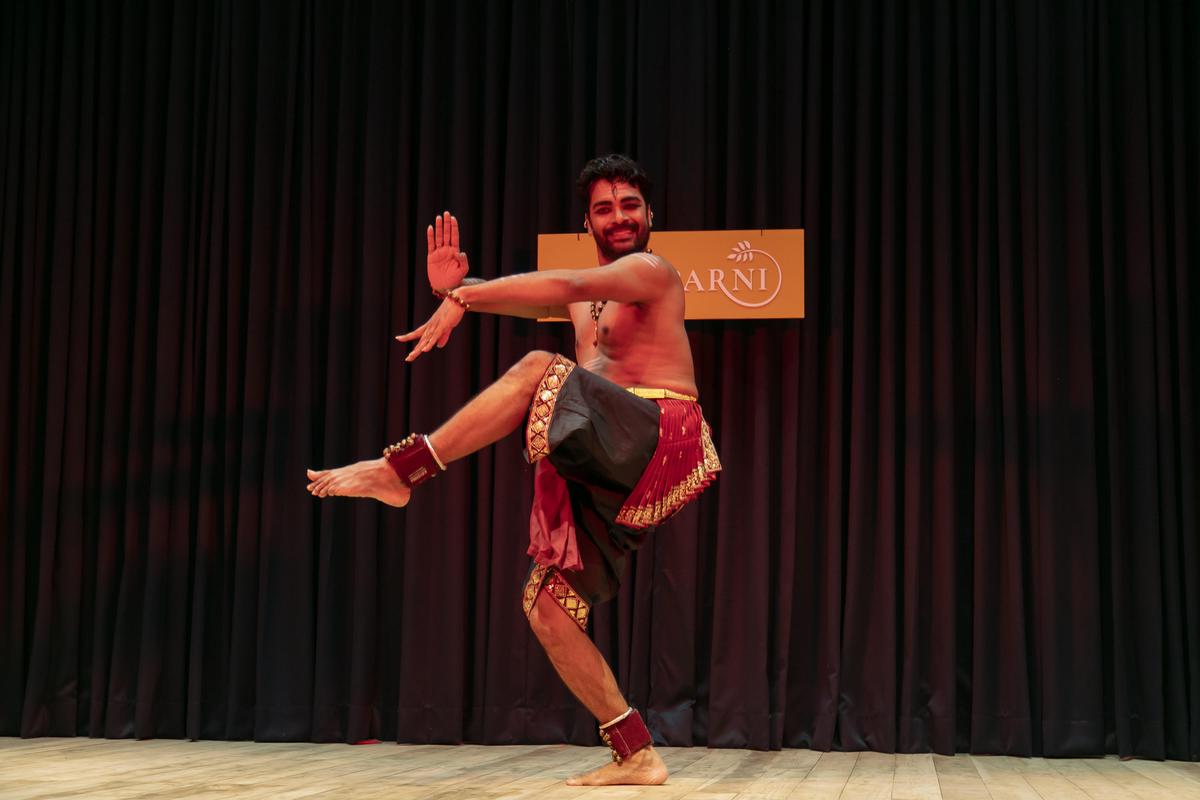
The ‘Adi Ashtakam’ performance at Saptaparni, Hyderabad
Adi Shankaracharya’s Ashtakams are not only spiritual teachings; they also have great potential for the performing arts. Dance expert Usha Rk recently showcased Adi Ashtakam, a captivating visual interpretation of Shankaracharya’s spiritual teachings, at the newly opened auditorium in Saptaparni, Hyderabad. This performance was particularly significant as it marked the eighth presentation of the Ashtakam following a successful tour of several other cities.
Conceptualised and compered by Usha, the Ashtakams were performed by Shreyasi Gopinath (Sharda Bhujanga Ashtakam), Arundhati Patwardhan (Panduranga Ashtakam), Prachi Save Saathi (Ganga Ashtakam), Mithun Shyam (Kalabhairava Ashtakam) and Keerthana Ravi (Guruvashtakam), to music composed and rendered by Vidya Harikrishna.
Post-performance in Hyderabad, Usha shares that this eighth presentation came about naturally. “We began our journey in Mumbai with the premiere at Nalanda Mahavidyalaya, then moved on to Pune, Bengaluru, and Chennai. During this time, Chembur Fine Arts in Mumbai invited us to perform, given the strong presence of Shankaracharya devotees in the area. We did two performances in Mumbai before heading to Kashi and finally reaching Hyderabad.”
Performing at Kashi on Vinayaka Chaturthi was an interesting coincidence, says Usha, who was there for personal reasons when she met someone who organises events at the famed Assi Ghat. “This gentleman was familiar with my work and asked what I focused on. When I mentioned the Ashtakam, he suggested that I perform it at the Vishwanath Temple. It was a tremendous honour, especially since the performance included the Ganga Ashtakam; it felt like a significant moment in our lives. The location, Shankaracharya Chowk, added even more significance to the event. For the first time, we were presenting Shankaracharya’s compositions — specifically Kaalabhairava and Ganga Ashtakams — at this historic site.”

Usha Rk
| Photo Credit:
Special Arrangement
Corporate to culture
The former director of the Jawaharlal Nehru Cultural Center (JNCC) of the Embassy of India in Moscow, Dehradun-based Usha comes from a corporate world. “In 2006, after moving from Mumbai to Bangalore, I transitioned from corporate-sponsored classical shows to a new focus in dance. Festivals had become common, and I wanted to create something unique. So I began developing thematic performances where dancers crafted pieces specifically for a story. My first project was on Bhadrachala Ramadas, with seven male dancers narrating his journey and imprisonment through his compositions.”
When discussing her confidence in transposing the entire poetic content of Ashtakam into dance, Usha emphasises that traditional dance forms are naturally descriptive. They visually express words and emotions, whether from a varnam, padam, or jaavali.
Looking ahead to exploring more Ashtakams from Shankaracharya’s works, Usha explains, “Adi Shankara composed over 30 Ashtakams, each dedicated to different deities, both male and female, as well as rivers. We’ve performed pieces like the Yamunashtakam, and in this next presentation, we plan to revisit some pieces and introduce others like the Sharada Ashtakam and the Guru Ashtakam. The Guru Ashtakam, in particular, holds special significance for me because it reflects the reverence for teachers — a concept that’s fading in the age of institutionalised education.”

From the ‘Adi Ashtakam’ performance at Saptaparni, Hyderabad
Usha, whose father hails from Visakhapatnam, learnt Bharatanatyam and Kuchipudi but no longer performs. “My parents didn’t allow public performances after our arangetram — I have kept my connection to dance alive in other ways. My father used to say, ‘If you cannot perform, you can still contribute through research, writing, and more.’ So, although I went on to study journalism and worked in corporate roles, dance remained a part of me. I organised programmes, conducted research, and nurtured my passion from the background.”
Usha’s love for dance led to an opportunity to work with the Ministry of Culture and as a cultural director in Russia; the experiences gave her insights into sustaining art across different cultures.
Usha shares that the Ashtakam performances will continue based on audience demand and sponsorship support. “There is a possibility of performing Mahakaal in Ujjain. These projects are more abstract, so we stay open and go with the flow. When an opportunity comes, we will be ready to bring it to life.”
Published – November 07, 2024 04:31 pm IST
